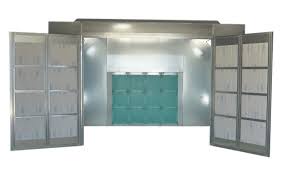When it comes to selecting the best exhaust system for a restaurant, several factors need to be considered, including the type of cuisine, cooking methods, kitchen layout, and local building codes. Here are some common types of exhaust systems used in restaurants:
-
Ventilation Hoods: Ventilation hoods are an integral part of any restaurant hood systems. They capture and remove heat, smoke, grease, and odors generated during cooking. Depending on the cooking equipment and layout of your kitchen, you can choose from canopy hoods, wall-mounted hoods, island hoods, or customized hoods to suit your specific needs.
-
Exhaust Fans: Exhaust fans work in conjunction with ventilation hoods to draw out the air and contaminants from the kitchen and expel them outside. Select exhaust fans with adequate capacity to provide sufficient airflow and maintain a comfortable working environment.
-
Ductwork: Ductwork is responsible for carrying the exhaust air from the hood to the outside of the building. It should be designed and installed properly to ensure efficient airflow and minimize the accumulation of grease and residue. The size and configuration of the ductwork will depend on the kitchen layout and the distance to the exhaust point.
-
Grease Filters: Grease filters are essential components in the exhaust system to capture grease particles and prevent them from accumulating in the ductwork. Regular cleaning and maintenance of the grease filters are crucial to ensure proper airflow and prevent fire hazards.
-
Make-up Air Units: Make-up air units supply fresh air into the kitchen to replace the air being exhausted. These units help maintain the proper balance of air pressure, improve ventilation efficiency, and prevent negative pressure in the kitchen.
-
Fire Suppression Systems: Fire suppression systems, such as automatic fire extinguishers or wet chemical systems, are vital for commercial kitchens. They provide an added layer of safety by quickly extinguishing fires that may occur on the cooking equipment.
It's important to consult with HVAC and kitchen ventilation professionals to assess your restaurant's specific needs and comply with local building codes and regulations. They can help design and install a custom exhaust system that meets safety standards, effectively removes cooking byproducts, and provides a comfortable working environment for your staff.


No comments yet